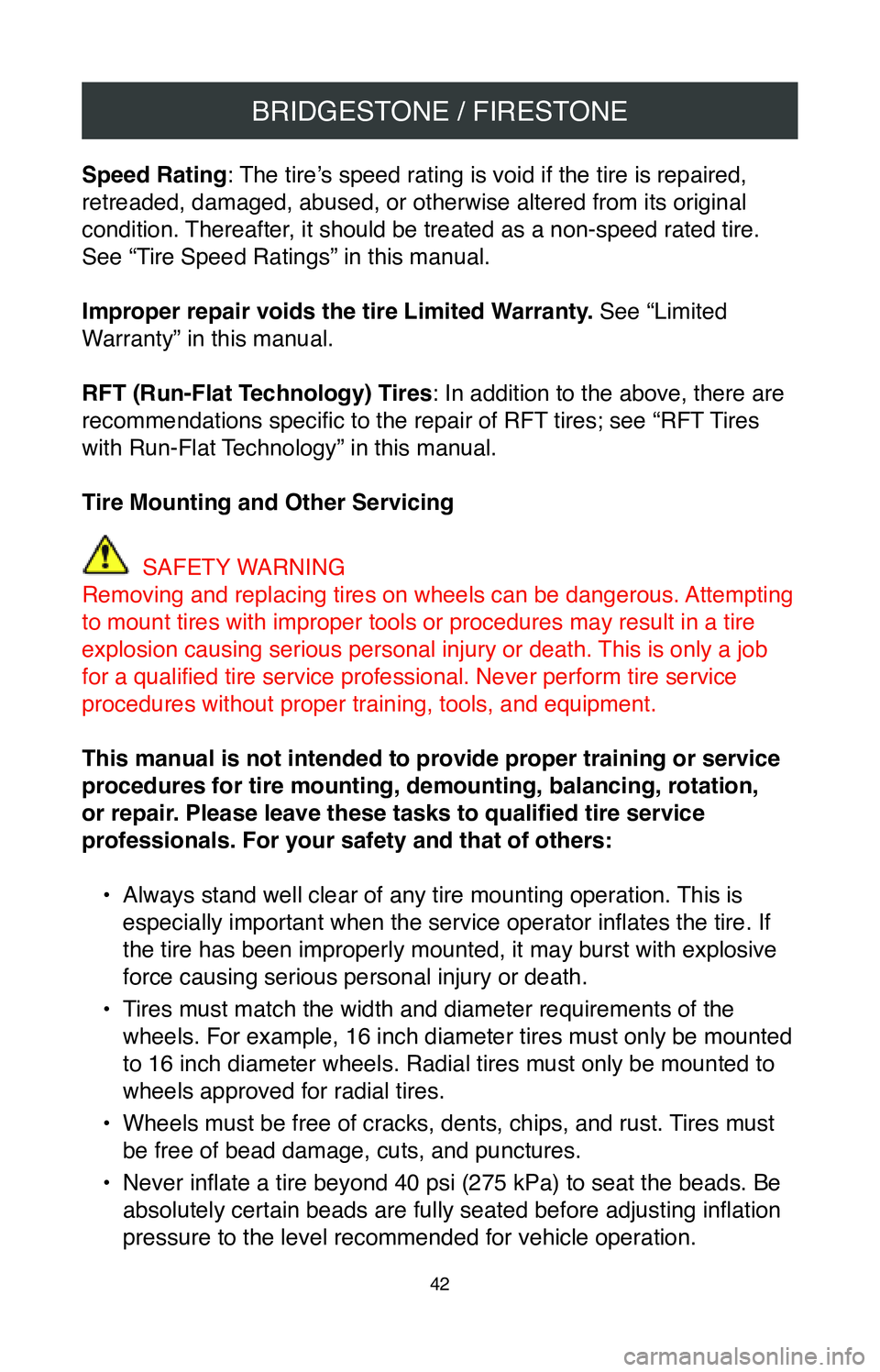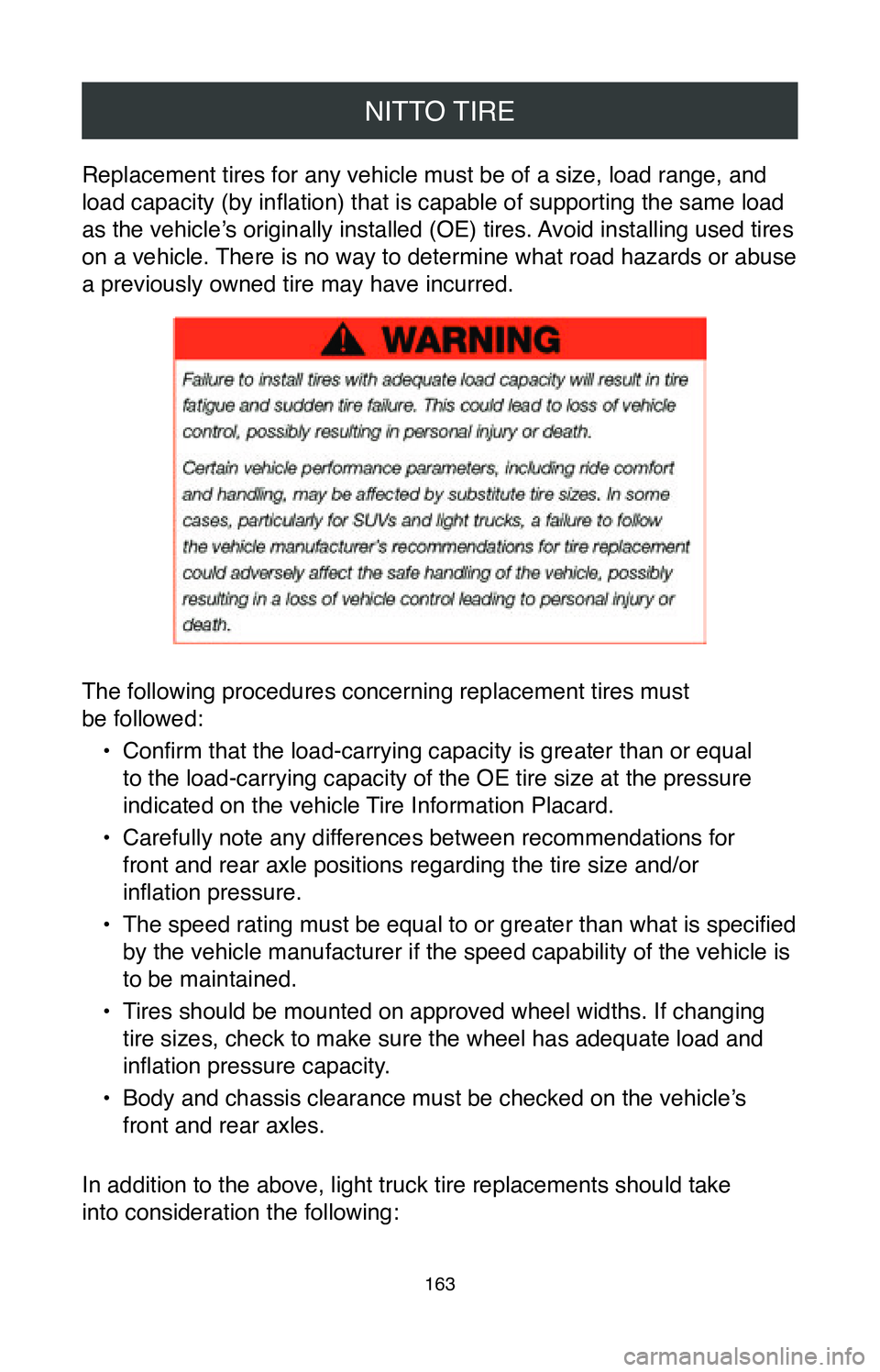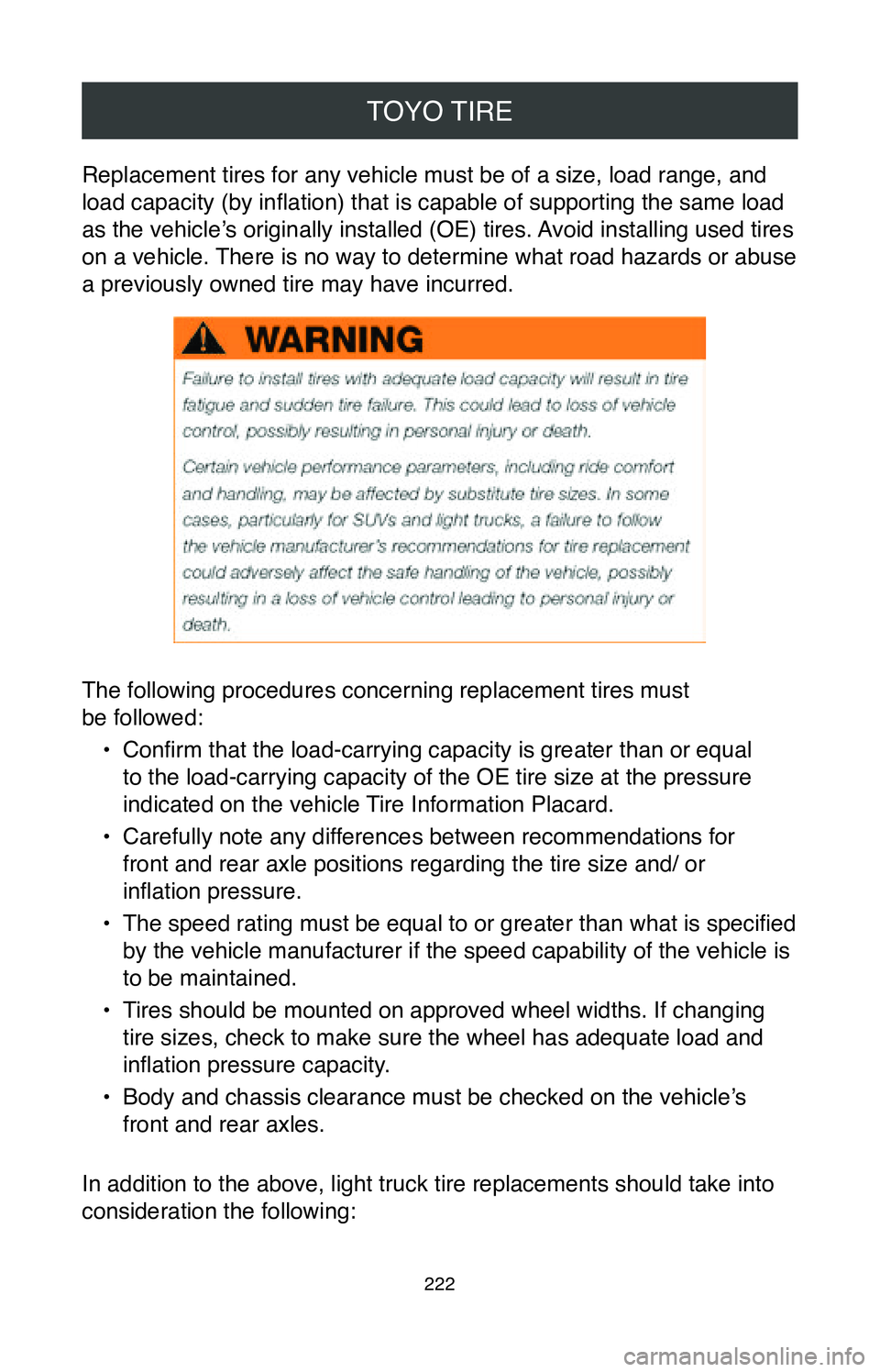width TOYOTA RAV4 2020 Warranties & Maintenance Guides (in English)
[x] Cancel search | Manufacturer: TOYOTA, Model Year: 2020, Model line: RAV4, Model: TOYOTA RAV4 2020Pages: 260, PDF Size: 8.54 MB
Page 44 of 260

BRIDGESTONE / FIRESTONE
42
Speed Rating: The tire’s speed rating is void if the tire is repaired,
retreaded, damaged, abused, or otherwise altered from its original
condition. Thereafter, it should be treated as a non-speed rated tire.
See “Tire Speed Ratings” in this manual.
Improper repair voids the tire Limited Warranty. See “Limited
Warranty” in this manual.
RFT (Run-Flat Technology) Tires: In addition to the above, there are
recommendations specific to the repair of RFT tires; see “RFT Tires
with Run-Flat Technology” in this manual.
Tire Mounting and Other Servicing
SAFETY WARNING
Removing and replacing tires on wheels can be dangerous. Attempting
to mount tires with improper tools or procedures may result in a tire
explosion causing serious personal injury or death. This is only a job
for a qualified tire service professional. Never perform tire service
procedures without proper training, tools, and equipment.
This manual is not intended to provide proper training or service
procedures for tire mounting, demounting, balancing, rotation,
or repair. Please leave these tasks to qualified tire service
professionals. For your safety and that of others:
•
Always stand well clear of any tire mounting operation. This is
especially important when the service operator inflates the tire. If
the tire has been improperly mounted, it may burst with explosive
force causing serious personal injury or death.
•
Tires must match the width and diameter requirements of the
wheels. For example, 16 inch diameter tires must only be mounted
to 16 inch diameter wheels. Radial tires must only be mounted to
wheels approved for radial tires.
•
Wheels must be free of cracks, dents, chips, and rust. Tires must
be free of bead damage, cuts, and punctures.
•
Never inflate a tire beyond 40 psi (275 kPa) to seat the beads. Be
absolutely certain beads are fully seated before adjusting inflation
pressure to the level recommended for vehicle operation.
Page 165 of 260

NITTO TIRE
163
Replacement tires for any vehicle must be of a size, load range, and
load capacity (by inflation) that is capable of supporting the same load
as the vehicle’s originally installed (OE) tires. Avoid installing used tires
on a vehicle. There is no way to determine what road hazards or abuse
a previously owned tire may have incurred.
The following procedures concerning replacement tires must
be followed:•
Confirm that the load-carrying capacity is greater than or equal
to the load-carrying capacity of the OE tire size at the pressure
indicated on the vehicle Tire Information Placard.
•
Carefully note any differences between recommendations for
front and rear axle positions regarding the tire size and/or
inflation pressure.
•
The speed rating must be equal to or greater than what is specified
by the vehicle manufacturer if the speed capability of the vehicle is
to be maintained.
•
Tires should be mounted on approved wheel widths. If changing
tire sizes, check to make sure the wheel has adequate load and
inflation pressure capacity.
•
Body and chassis clearance must be checked on the vehicle’s
front and rear axles.
In addition to the above, light truck tire replacements should take
into consideration the following:
Page 224 of 260

TOYO TIRE
222
Replacement tires for any vehicle must be of a size, load range, and
load capacity (by inflation) that is capable of supporting the same load
as the vehicle’s originally installed (OE) tires. Avoid installing used tires
on a vehicle. There is no way to determine what road hazards or abuse
a previously owned tire may have incurred.
The following procedures concerning replacement tires must
be followed:•
Confirm that the load-carrying capacity is greater than or equal
to the load-carrying capacity of the OE tire size at the pressure
indicated on the vehicle Tire Information Placard.
•
Carefully note any differences between recommendations for
front and rear axle positions regarding the tire size and/ or
inflation pressure.
•
The speed rating must be equal to or greater than what is specified
by the vehicle manufacturer if the speed capability of the vehicle is
to be maintained.
•
Tires should be mounted on approved wheel widths. If changing
tire sizes, check to make sure the wheel has adequate load and
inflation pressure capacity.
•
Body and chassis clearance must be checked on the vehicle’s
front and rear axles.
In addition to the above, light truck tire replacements should take into\
consideration the following: